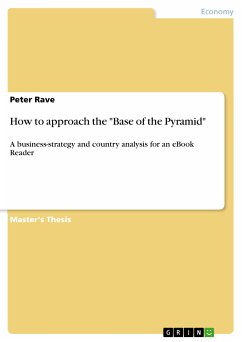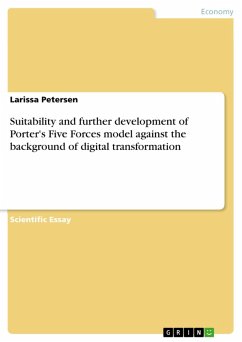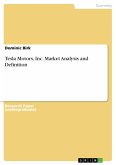Master's Thesis from the year 2009 in the subject Business economics - Business Management, Corporate Governance, grade: 1,7, University of applied sciences Frankfurt a. M., language: English, abstract: Four billion people live with less than 8$ per day. Stuart Hart and C.K. Prahalad describe people living in this income segment as "Base of the Pyramid". They show that these four billion people are involved in economic processes: They consume, offer their manpower and their products on local markets and they run businesses. So far, the developed world perceived them as aid recipients. Hart and Prahalad invented the idea that multinational enterprises can approach this huge market when they invest in innovative products and enable the poor to do business and integrate them in their value chain. By conducting three analyses the author aimed at understanding how companies involved in the eBook-reader industry can approach markets at the base of the pyramid: A country analysis to identify countries with favourable market potentials; an industry analysis to understand the main forces within the industry, and a business-strategy analysis to understand the strengths and weaknesses of four selected competitors. Based on these findings and considering international recommendations, a strategy map has been developed for the eBook-reader industry. Companies can only successfully approach the base of the pyramid when they adapt their products and processes, invest in removing market constraints, leverage the strengths of the poor, combine resources and capabilities with others and engage in policy dialogue with governments. According to the industry, 2010 might become the year of the eBook-reader. If produced at much lower costs than today and marketed as a tool for education, eBook-readers could become a useful product for the base of the pyramid. This desk research gives companies a first orientation when considering markets at the base of the pyramid. According to Hart and Prahalad, an open exchange and learning process between entrepreneurs, scientists, companies, NGOs and international development organisations is key to drive innovations at the base of the pyramid.
Dieser Download kann aus rechtlichen Gründen nur mit Rechnungsadresse in A, B, BG, CY, CZ, D, DK, EW, E, FIN, F, GR, HR, H, IRL, I, LT, L, LR, M, NL, PL, P, R, S, SLO, SK ausgeliefert werden.









